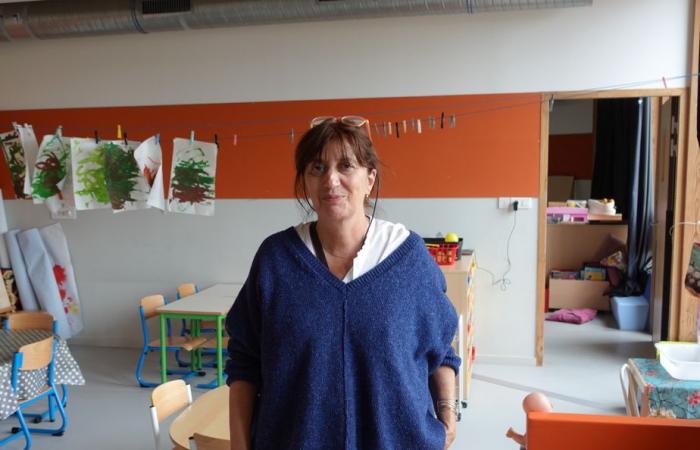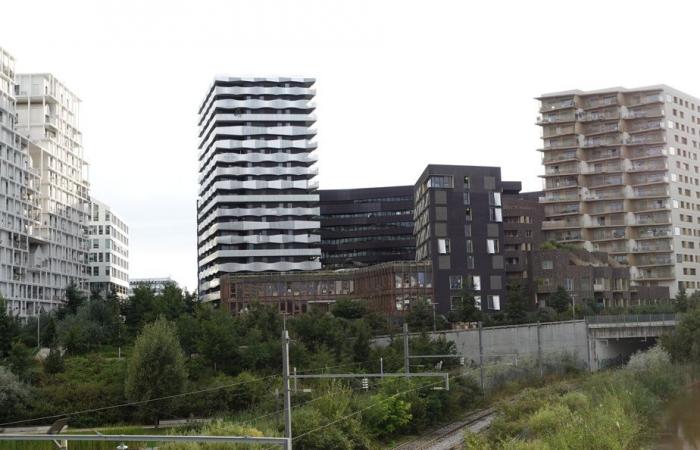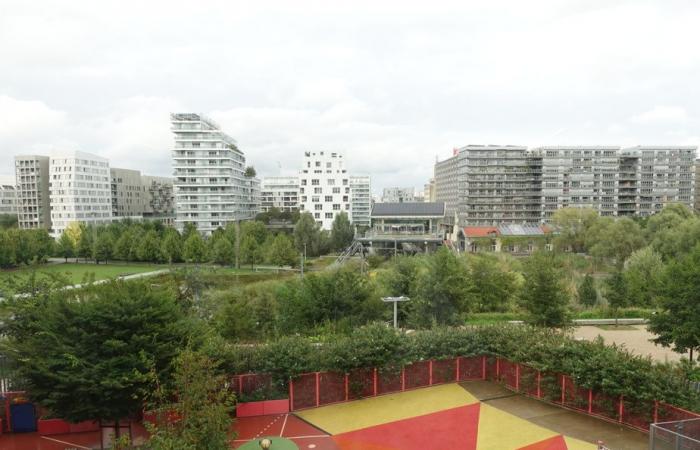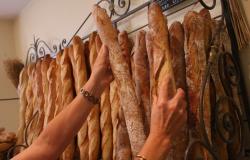(Paris) Looking at the very large wooden windows which overlook the treetops, you could imagine yourself in a luxurious chalet in the Laurentians. But no, we are in M’s classme Sarah, teacher at the Rostropovitch public primary school, in the heart of Paris.
Published at 6:50 a.m.
Rafael Miro
Special collaboration
“All day long, we have beautiful natural light entering the classroom. I would say that it calms the children,” explains Sarah, who teaches a small section (pre-kindergarten) to around twenty 3 and 4 year old children. “In the morning, there are so many that we have to partially close the shutters, otherwise it’s too hot. »
M’s classme Sarah isn’t the only one with such a beautiful view. In this small school of six classes, built entirely of wood in the 17e district of Paris, all the rooms have at least one wall covered with windows, if not two. “In several places, you can even see the Montmartre hill,” explains the director, Florence Davy, who says she was dazzled by the architecture of the building when she arrived five years ago.
PHOTO RAFAEL MIRÓ, COLLABORATION SPÉCIALE
Florence Davy, director of the Rostropovitch school, in one of the classrooms
From the class of Mme Sarah, we can especially see the ponds of Martin-Luther-King Park, a 10-hectare green space in which the school is embedded. “Throughout the seasons, we see ducks and herons passing by during lessons,” explains the teacher.
For school outings, no headache: teachers don’t even have to cross a street to find themselves in the park.
The school has several architectural curiosities, both outside and inside. In the classrooms, integrated furniture has been provided to facilitate the work of teachers. “Teachers really like the sliding cabinets built into the wall, which are angled so children can use them as painting easels,” says Ms.me Davy, the director.
A school, a nursery, 127 housing units
The Rostropovitch nursery school was inaugurated in 2019 to accommodate children aged 3 to 5 years old. The building also houses a public crèche (the equivalent of a CPE) on the garden level, with its own playground.
Pierre Thibault, the Quebec architect who has led the Lab’École project over the past seven years alongside Ricardo Larrivee and Pierre Lavoie, had the opportunity to see the school and cites it as a model of success. “It’s a building of extraordinary quality, especially since it was built on a very small plot of land,” he boasts. The design of the school was done following an architectural competition, as is always the case for public buildings in France.
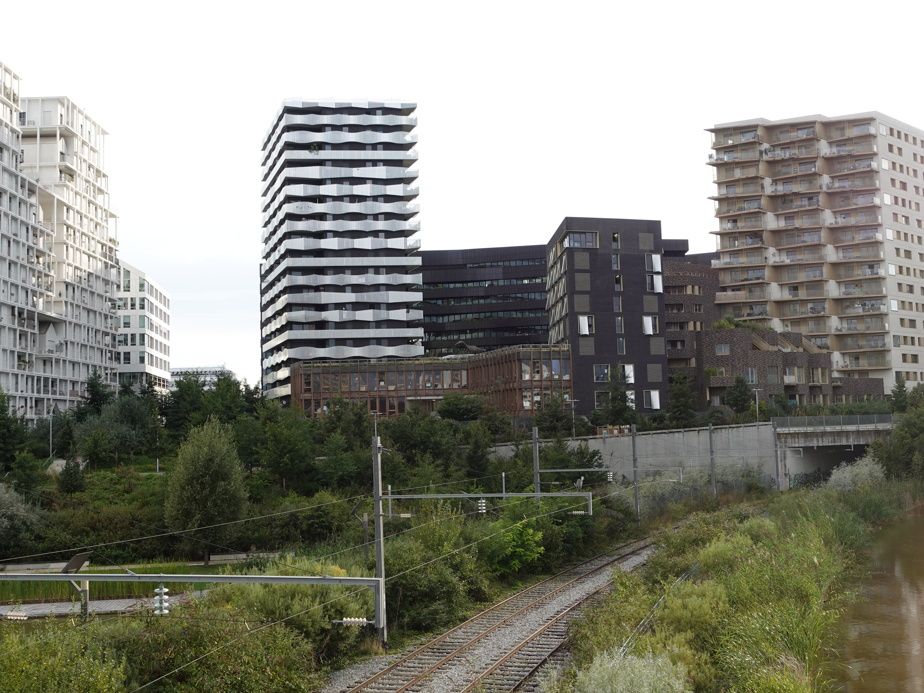
PHOTO RAFAEL MIRÓ, COLLABORATION SPÉCIALE
The Rostropovich School was built in the shape of an “X”.
What particularly amazes Pierre Thibault is that the Rostropovitch school was built at the same time as two residential towers of 6 and 15 floors. “You would think that would be a problem, but you barely feel the presence of the buildings,” he illustrates.
“So that the light reaches everywhere, we built the school in the shape of an “X”, with the legs which wrap around the bottom of the buildings,” explains Boris Schneider, the architect who drew the plans, over the phone. “And in the two empty spaces that are formed, there is a courtyard for the school and another for the nursery. » In both courtyards, trees, games, small wooden benches and a colorful floor suitable for children to play without getting hurt.
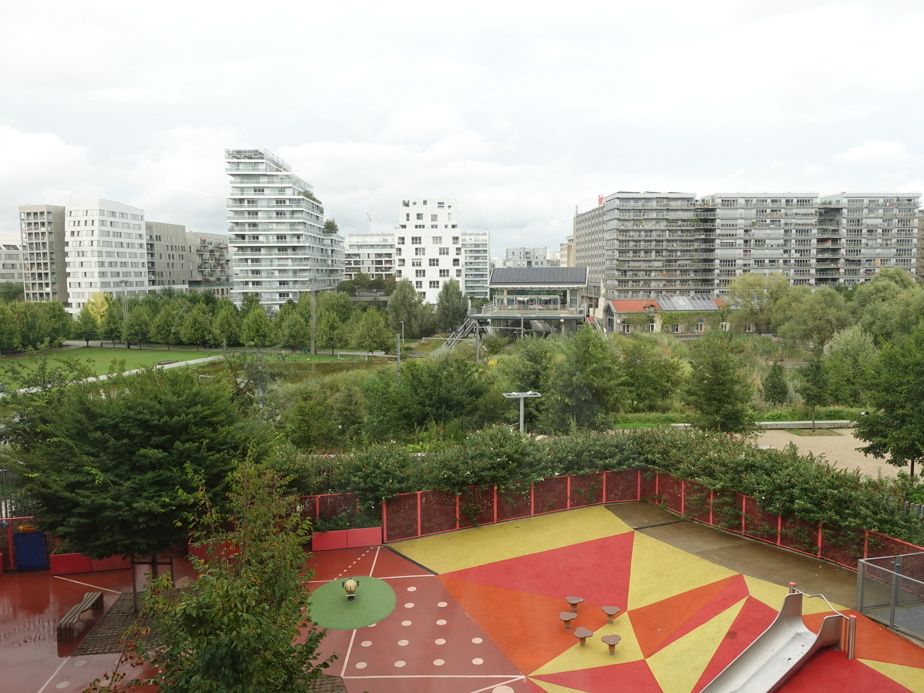
PHOTO RAFAEL MIRÓ, COLLABORATION SPÉCIALE
The school playground, seen from the second floor. Behind, the Martin-Luther-King park, a 10-hectare green space built at the same time as the new Parisian district of Batignolles.
No problems noise
The 6-story building serves as a temporary residence for foreign workers, while the 15-story building is made up mainly of social housing, intended for several income levels. “And having visited it, it is very high quality social housing, with no visible difference from private housing,” Pierre Thibault is surprised.
It must be said that social housing is very widespread in France and is not intended only for the most disadvantaged populations: 16% of main residences in the country are social housing, compared to 3.5% in Quebec.
“In Paris, we almost no longer have schools without overlapping with public buildings or housing, often with a social vocation,” explains Boris Schneider. This way of doing things still presents some challenges. “You have to provide many different entrances, and above all, you have to respect a distance between the windows and the courtyard so that objects cannot fall on the children,” explains the architect.
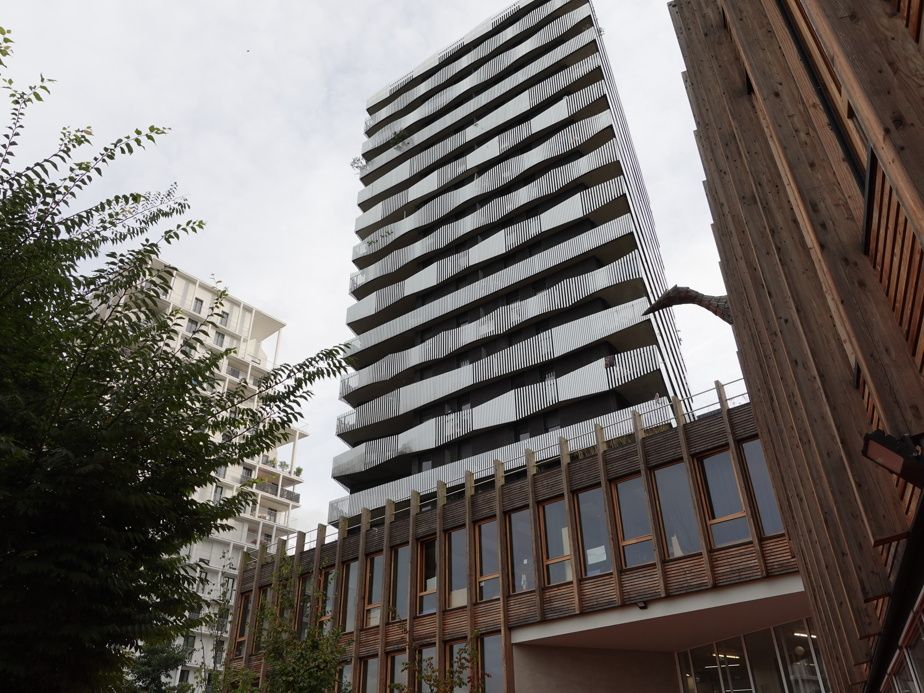
PHOTO RAFAEL MIRÓ, COLLABORATION SPÉCIALE
Built at the same time as the Rostropovitch school, this 15-story tower houses 77 social housing units.
Residents of the places encountered by The Press do not complain about the presence of the school at the bottom of the building. “It makes a lot of noise, it’s true, but it’s a pleasant noise. It’s only a few times a day, and only during the week,” explains Abdel, who lives on the second floor, very close to the courtyard. “I’m not complaining, because I would have had difficulty finding accommodation this big elsewhere,” he says. “It helps that the windows were very well insulated. »
Fatou Dabo, who chose to settle here three years ago with her partner and two toddlers, does not complain about the noise either, happy to be so close to the school. “Between work and daily life, it’s one less thing to drop the little ones off at daycare when leaving the house,” she explains.
A school of proximity
Florence Davy estimates that a “dozen families” who attend her school live directly above. “And almost all of the children come from Rostropovitch Street, which has several buildings,” she explains.
Almost all parents come to pick up their children on foot, and often they have a picnic in the stroller to go to the park afterwards.
Florence Davy, director of the Rostropovitch school
When the Batignolles district was built in the 2010s, everything was designed so that families would come and settle there. The location of the schools was thought out in advance, by architects commissioned by the State, and they were built at the same time as the homes. In addition to the Rostropovitch school, three of them are located on the edge of Martin-Luther-King Park, very popular with families.
The state has even planned extra classes. “We have a classroom that we use to store equipment, which is a shame,” explains Florence Davy. Even if she is generally very satisfied with the architecture of her school, the principal has nevertheless found, in five years, some manufacturing defects. “They could have thought of putting a toilet in the courtyard, it’s quite a logistics to bring in children from 3 to 5 years old whenever they want… but it’s perhaps too precise a detail to be thought of at once. advance ! »


